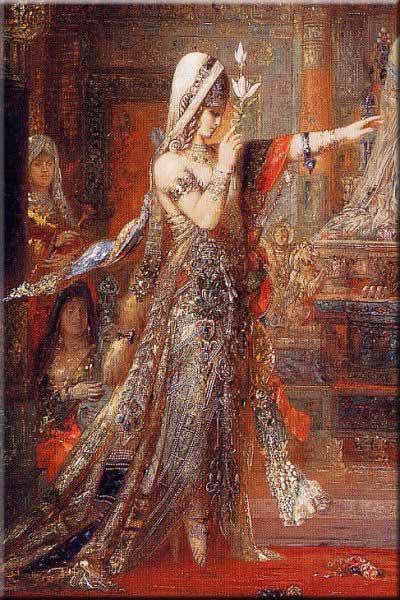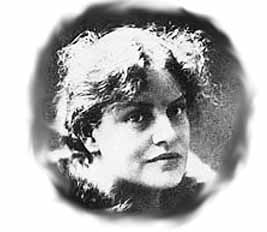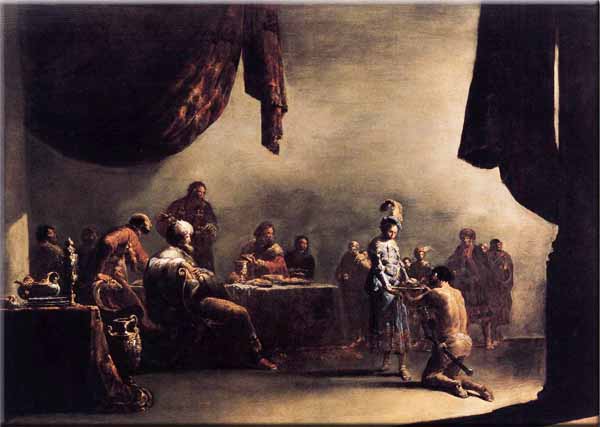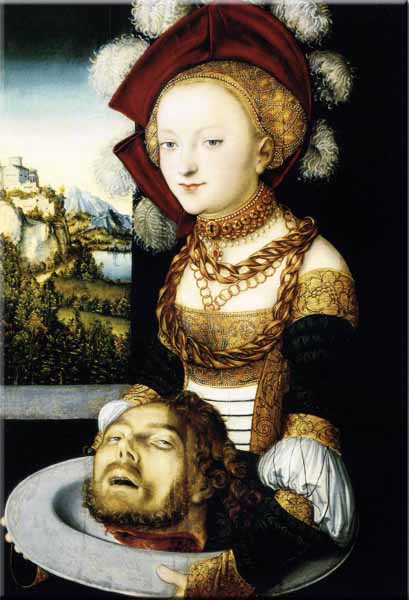Why did Jung chose Salome during active imagination for the Red Book?

A). Jung didn’t chose Salome — she chose him.
B). Dancing women are hard to resist.
C). He had an unconscious projection on Lou Andreas-Salome (friend of Nietzche, Rilke and Freud.)
D). His anima made him lose his head.


Leonaert Bramer
1630s
Oil on canvas
Musée des Beaux-Arts, Nimes
From Wikipedia:
According to Mark 6:21-29 (Salome is not mentioned by name in this passage so reference is incomplete), Salome was the stepdaughter of Herod Antipas. Salome danced before Herod and her mother Herodias at the occasion of his birthday, and in doing so gave her mother the opportunity to obtain the head of John the Baptist. According to Mark’s gospel Herodias bore a grudge against John for stating that Herod’s marriage to Herodias was unlawful; Herodias encouraged Salome to demand that John be executed.
And when a convenient day was come, that Herod on his birthday made a supper to his lords, high captains, and chief estates of Galilee; And when the daughter of the said Herodias came in, and danced, and pleased Herod and them that sat with him, the king said unto the damsel, Ask of me whatsoever thou wilt, and I will give it thee. And he sware unto her, Whatsoever thou shalt ask of me, I will give it thee, unto the half of my kingdom. And she went forth, and said unto her mother, What shall I ask? And she said, The head of John the Baptist.
And she came in straightway with haste unto the king, and asked, saying, I will that thou give me by and by in a charger the head of John the Baptist. And the king was exceeding sorry; yet for his oath’s sake, and for their sakes which sat with him, he would not reject her. And immediately the king sent an executioner, and commanded his head to be brought: and he went and beheaded him in the prison, and brought his head in a charger, and gave it to the damsel: and the damsel gave it to her mother. And when his disciples heard of it, they came and took up his corpse, and laid it in a tomb. (Mark 6:21-29, KJV)

1530
Oil on poplar panel, 87 x 58 cm
Szépmûvészeti Múzeum, Budapest
A parallel passage to Mark 6:21-29 is in the Gospel of Matthew 14:6-11:
But on Herod’s birthday, the daughter of Herodias danced before them: and pleased Herod. Whereupon he promised with an oath, to give her whatsoever she would ask of him. But she being instructed before by her mother, said: Give me here in a dish the head of John the Baptist. And the king was struck sad: yet because of his oath, and for them that sat with him at table, he commanded it to be given. And he sent, and beheaded John in the prison.
And his head was brought in a dish: and it was given to the damsel, and she brought it to her mother. And his disciples came and took the body, and buried it, and came and told Jesus. (Matt 14:6-11, D-R)
Some ancient Greek versions of Mark read “Herod’s daughter Herodias” (rather than “daughter of the said Herodias”).[1] To scholars using these ancient texts, both mother and daughter had the same name. However, the Latin Vulgate Bible translates the passage as it is above, and western Church Fathers therefore tended to refer to Salome as “Herodias’s daughter” or just “the girl”. Nevertheless, because she is otherwise unnamed in the Bible, the idea that both mother and daughter were named Herodias gained some currency in early modern Europe.

Oh the irony– an oath given is more to be honored than a human life! Of course this is not correct.
Why Princess Salome? Could it not be Salome the Disciple found in Mark (Mark 15:40, 16:1) and various Gnostic gospels?